 Search by Keyword
|
"SUN KING"
(John Lennon – Paul McCartney)
Upon investigation, it's quite interesting to discover the inspirations behind the individual songs of The Beatles. Whether it came from something one of them read somewhere, a song one of them heard, a recording artist one of them admired, a suggestions someone made, or even a dream one of them had, the seeds of where a classic song originated can be thrilling to uncover.
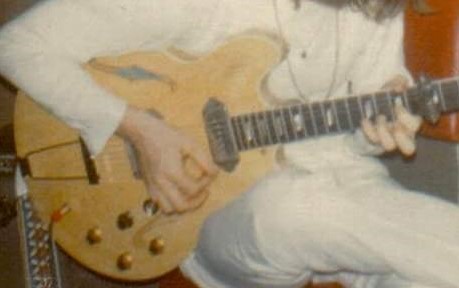 What is interesting regarding the song “Sun King,” the second title attributed to what most refer to as the long “Abbey Road” medley on side two of that album, is that the genesis of that composition comes from all five of the categories mentioned above. As we'll see below, this song is far more than a piece of unfinished finger-picking guitar playing that many assume Lennon happened to light upon one day and never got around do doing anything with, and therefore fit in nicely as an adequate but insignificant segue between two other more noteworthy pieces of music. On the contrary, its inspiration and significance go much deeper than that. What is interesting regarding the song “Sun King,” the second title attributed to what most refer to as the long “Abbey Road” medley on side two of that album, is that the genesis of that composition comes from all five of the categories mentioned above. As we'll see below, this song is far more than a piece of unfinished finger-picking guitar playing that many assume Lennon happened to light upon one day and never got around do doing anything with, and therefore fit in nicely as an adequate but insignificant segue between two other more noteworthy pieces of music. On the contrary, its inspiration and significance go much deeper than that.
Songwriting History
Sometime in December of 1968, John had begun writing a song dedicated to his new love Yoko Ono entitled "Don't Let Me Down." He combined this new composition with another song idea, one in which he interchanged the words "Here comes the sun, whoa, the sun" with "Don't let me down," as first evidenced on January 2nd, 1969 at Twickenham Film Studios, this being the first day of rehearsals for what would eventually become the "Let It Be" film and sountrack album. Interestingly, the chord pattern he was using for this composite song was played in a very distinctive way, using what some would term "pull chords." A small segment of this can be heard on the "Fly On The Wall" bonus disc that came with the 2003 released "Let It Be...Naked" album.
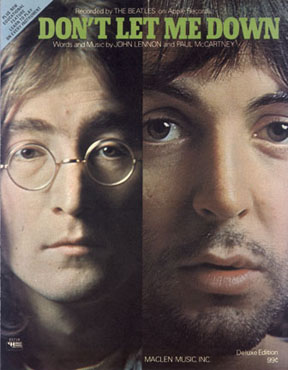 As "Don't Let Me Down" continued to be developed in later January sessions, the "pull chords" were dropped. However, John simultaneously began toying around with these "pull chords" in loosely developing them into a seperate song that included the "Here comes the sun" theme in the lyrics. It is here we see the true evolution of what eventually became the song "Sun King." Also, even if only subconsciously, this may be the initial inspiration for George Harrison to write his song "Here Comes The Sun" a few months later. As "Don't Let Me Down" continued to be developed in later January sessions, the "pull chords" were dropped. However, John simultaneously began toying around with these "pull chords" in loosely developing them into a seperate song that included the "Here comes the sun" theme in the lyrics. It is here we see the true evolution of what eventually became the song "Sun King." Also, even if only subconsciously, this may be the initial inspiration for George Harrison to write his song "Here Comes The Sun" a few months later.
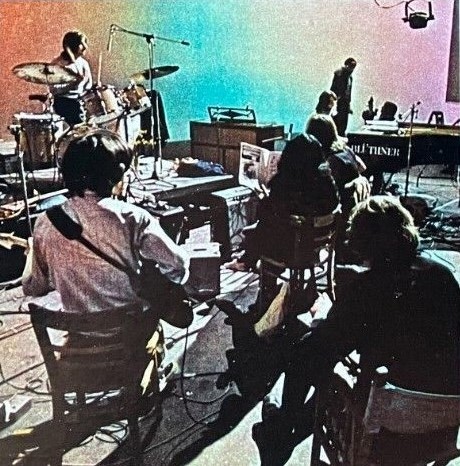 This early development of "Sun King," apparently not having a name as of yet, appeared to have languished in the back of John's mind in this unfinished state for a few months. Then, when Paul approached him sometime in May of 1969, inquiring whether he had any unfinished songs to compile into a long medley, John presented this undeveloped song idea along with a few others. “'It was just half a song I had which I never finished,” he explained to a DJ in 1969, “which was one way of getting rid of it without ever finishing it. Then in the medley, we just wanted a change of atmosphere, and, 'Here comes the Sun King.' Why not? And 'Here he comes,' and 'Everybody's happy' and 'quando paramucho' etc., etc." In 1980, John added: “That's a piece of garbage I had around.” This early development of "Sun King," apparently not having a name as of yet, appeared to have languished in the back of John's mind in this unfinished state for a few months. Then, when Paul approached him sometime in May of 1969, inquiring whether he had any unfinished songs to compile into a long medley, John presented this undeveloped song idea along with a few others. “'It was just half a song I had which I never finished,” he explained to a DJ in 1969, “which was one way of getting rid of it without ever finishing it. Then in the medley, we just wanted a change of atmosphere, and, 'Here comes the Sun King.' Why not? And 'Here he comes,' and 'Everybody's happy' and 'quando paramucho' etc., etc." In 1980, John added: “That's a piece of garbage I had around.”
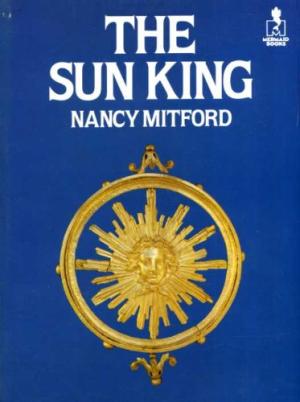 John had decided to develop the lyric around his original "here comes the sun" inspiration back in January, despite the fact that George had already written a song with that title that had already begun to be recorded by that time. It is claimed, such as in Steve Turner's book “A Hard Day's Write,” that Lennon described ”Sun King” as “something that had come to him in a dream, implying that it was an inspired piece of work.” While this may be true, it must be emphasized that John was a heavy reader. The 1966 released book entitled “The Sun King” by Nancy Mitford, which was a biography of France's Louis XIV, may be the true inspiration that Lennon had incorporated into the song after reading the book, “or reading a review of” it, speculates Barry Miles in Paul McCartney's “Many Years From Now” biography. “A Hard Day's Write” conjures the idea that John, after reading the book, had “a dream wherein the King entered his palace to find all his guests were laughing and happy.” John had decided to develop the lyric around his original "here comes the sun" inspiration back in January, despite the fact that George had already written a song with that title that had already begun to be recorded by that time. It is claimed, such as in Steve Turner's book “A Hard Day's Write,” that Lennon described ”Sun King” as “something that had come to him in a dream, implying that it was an inspired piece of work.” While this may be true, it must be emphasized that John was a heavy reader. The 1966 released book entitled “The Sun King” by Nancy Mitford, which was a biography of France's Louis XIV, may be the true inspiration that Lennon had incorporated into the song after reading the book, “or reading a review of” it, speculates Barry Miles in Paul McCartney's “Many Years From Now” biography. “A Hard Day's Write” conjures the idea that John, after reading the book, had “a dream wherein the King entered his palace to find all his guests were laughing and happy.”
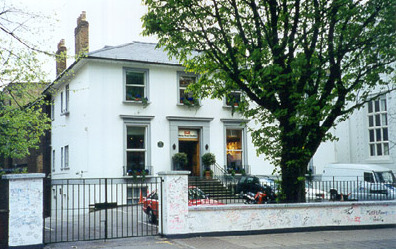 In any event, this takes us to July 24th, 1969, where John premiers the song in EMI Studios to properly record what he now called "Here Comes The Sun-King" and, in the process, completes the writing. “We just started joking, you know, it's 'cod,'” John explained in 1969 about the session on that day. “You know, singing 'Quando para mucho.' So we just made it up. Paul knew a few Spanish words from school, you know. So we just strung any Spanish words that sounded vaguely like something. And of course we got 'Chicka ferdy' in. That's a Liverpool expression. Just like sort of – it doesn't mean anything, just like (childish taunting) 'Na-na, na-na-na!' The one we missed, we should have had, was 'Paranoia.' We forgot all about it. We used to call ourselves 'Los Paranoias.' 'Cake and eat it' is another nice line too, because they have that in Spanish – 'Que,' or something, can eat it.” In any event, this takes us to July 24th, 1969, where John premiers the song in EMI Studios to properly record what he now called "Here Comes The Sun-King" and, in the process, completes the writing. “We just started joking, you know, it's 'cod,'” John explained in 1969 about the session on that day. “You know, singing 'Quando para mucho.' So we just made it up. Paul knew a few Spanish words from school, you know. So we just strung any Spanish words that sounded vaguely like something. And of course we got 'Chicka ferdy' in. That's a Liverpool expression. Just like sort of – it doesn't mean anything, just like (childish taunting) 'Na-na, na-na-na!' The one we missed, we should have had, was 'Paranoia.' We forgot all about it. We used to call ourselves 'Los Paranoias.' 'Cake and eat it' is another nice line too, because they have that in Spanish – 'Que,' or something, can eat it.”
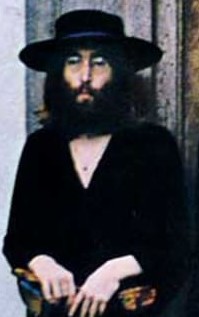 “Chicka ferdy” is said to be a scouse dialect phrase used for childish teasing, as John attempts to explain above. However, Paul clarified this a little further in a 2020 interview with Mirror, saying: "There was a thing in Liverpool that us kids used to do, which was instead of saying 'f*ck off,' we would say 'chicka ferdy'...in that song, we just kind of made up things, and we were all in on the joke. We were thinking that nobody would know what it meant, and most people would think, 'Oh, it must be Spanish,' or something. But we got a little sedtious word in there!" “Chicka ferdy” is said to be a scouse dialect phrase used for childish teasing, as John attempts to explain above. However, Paul clarified this a little further in a 2020 interview with Mirror, saying: "There was a thing in Liverpool that us kids used to do, which was instead of saying 'f*ck off,' we would say 'chicka ferdy'...in that song, we just kind of made up things, and we were all in on the joke. We were thinking that nobody would know what it meant, and most people would think, 'Oh, it must be Spanish,' or something. But we got a little sedtious word in there!"
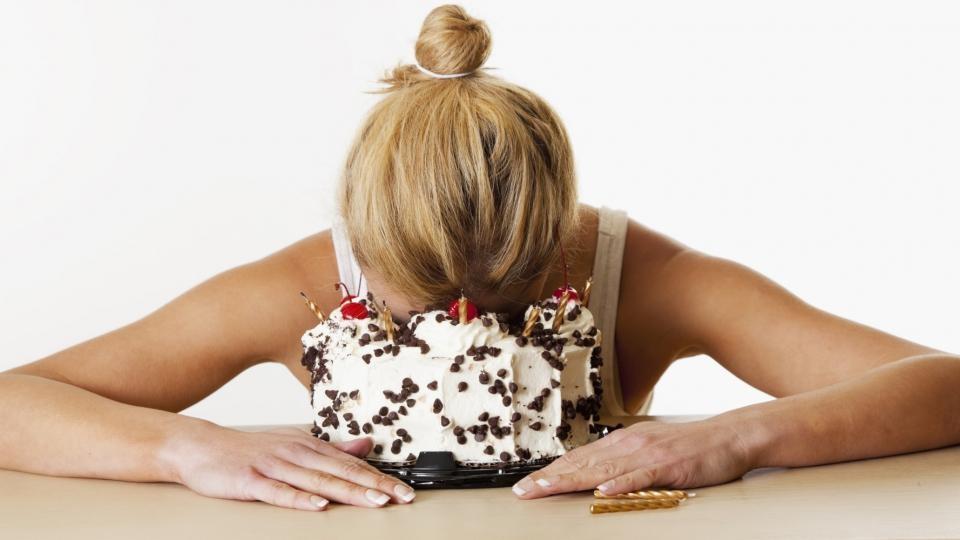 “Cake and eat it” is undoubtedly a reference to the popular English idiomatic proverb “You can't have your cake and eat it too,” meaning “you can't have it both ways.” Since they were stringing together phrases that sounded Spanish to go along with what appeared to them to be a Spanish-sounding backing track that they were recording, John and Paul appear to have used the phrase “que and eat it” as a Spanish-sounding pun for “cake and eat it.” “Cake and eat it” is undoubtedly a reference to the popular English idiomatic proverb “You can't have your cake and eat it too,” meaning “you can't have it both ways.” Since they were stringing together phrases that sounded Spanish to go along with what appeared to them to be a Spanish-sounding backing track that they were recording, John and Paul appear to have used the phrase “que and eat it” as a Spanish-sounding pun for “cake and eat it.”
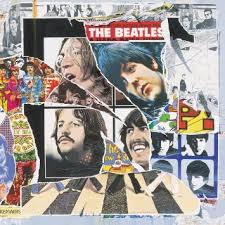 “I think John called this 'Los Paranoias,'” George was once quoted as saying, which has led many writers to claim this as a fact. In actuality, as John states above, he and Paul jokingly suggested naming their group “Los Paranoias” when they were originally throwing around ideas in 1960. This suggestion was remembered in the recording studio on September 16th, 1968 while recording Paul's song “I Will,” which resulted in them ad libbing a Spanish sounding song containing the lyrics “Los Paranoias, come on, enjoy us.” This silly recording was actually released on the 1996 compilation “Anthology 3.” The fact remains, however, that John has never claimed “Los Paranoias” as a working title for “Sun King,” so George appears to have remembered it wrong. “I think John called this 'Los Paranoias,'” George was once quoted as saying, which has led many writers to claim this as a fact. In actuality, as John states above, he and Paul jokingly suggested naming their group “Los Paranoias” when they were originally throwing around ideas in 1960. This suggestion was remembered in the recording studio on September 16th, 1968 while recording Paul's song “I Will,” which resulted in them ad libbing a Spanish sounding song containing the lyrics “Los Paranoias, come on, enjoy us.” This silly recording was actually released on the 1996 compilation “Anthology 3.” The fact remains, however, that John has never claimed “Los Paranoias” as a working title for “Sun King,” so George appears to have remembered it wrong.
 So as for the time of writing, it appears that it started to take shape in December of 1968 and came to a completed state in the recording studio on July 24th, 1969. Because Paul did play a part in coming up with Spanish-sounding words to be used in the closing moments of the song, he can be said to have contributed in this way to what is overwhelmingly considered a John Lennon composition. So as for the time of writing, it appears that it started to take shape in December of 1968 and came to a completed state in the recording studio on July 24th, 1969. Because Paul did play a part in coming up with Spanish-sounding words to be used in the closing moments of the song, he can be said to have contributed in this way to what is overwhelmingly considered a John Lennon composition.
Recording History
The first actual recordings of what eventually became the song “Sun King” were during the above mentioned January 1969 rehearsals at Twickenham Film Studios. All of these rehearsals were filmed and recorded and what was considered by director Michael Lindsay-Hogg to be the best footage was eventually released as the “Let It Be” film. Five run-throughs of the song happened on the first day of rehearsals, January 2nd, four versions occurred on January 3rd, and then one quick version done on January 10th, which was the day that George Harrison temporarily quit The Beatles.
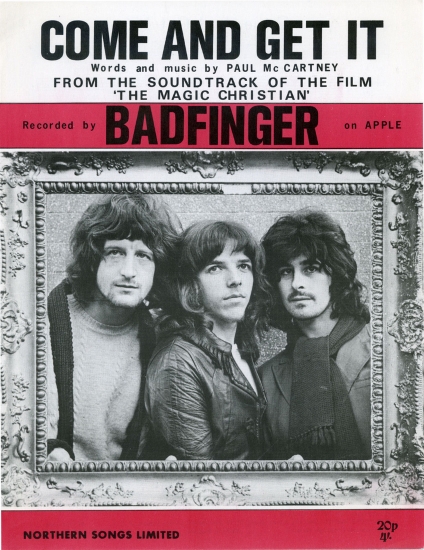 Six-and-a-half months later, on July 24th, 1969, John brought in a more complete version of the song, entitled “Here Comes The Sun-King” at this point, for inclusion on the proposed long medley for their next album “Abbey Road.” In fact, in the spirit of assembling this medley, John also brought in another unfinished composition called “Mean Mr. Mustard” which would also be recorded on this day in tandem with "Here Comes The Sun-King." The intention of this day's recording being part of the medley was quite clear, the tape box indicating the song as "Part Two...Here Comes The Sun-King." They were all present at EMI Studio Two at 3:30 pm to begin this session, Paul arriving an hour earlier to record his song “Come And Get It” by himself. This solo recording was to be used as a demo and given to the Apple band The Iveys (soon to be re-named Badfinger) for inclusion in Ringo's soon-to-be-released movie "The Magic Christian." Six-and-a-half months later, on July 24th, 1969, John brought in a more complete version of the song, entitled “Here Comes The Sun-King” at this point, for inclusion on the proposed long medley for their next album “Abbey Road.” In fact, in the spirit of assembling this medley, John also brought in another unfinished composition called “Mean Mr. Mustard” which would also be recorded on this day in tandem with "Here Comes The Sun-King." The intention of this day's recording being part of the medley was quite clear, the tape box indicating the song as "Part Two...Here Comes The Sun-King." They were all present at EMI Studio Two at 3:30 pm to begin this session, Paul arriving an hour earlier to record his song “Come And Get It” by himself. This solo recording was to be used as a demo and given to the Apple band The Iveys (soon to be re-named Badfinger) for inclusion in Ringo's soon-to-be-released movie "The Magic Christian."
 Engineer Geoff Emerick, in his book “Here, There And Everywhere,” relates how these two songs were “both recorded together in a single pass. There is a slight gap between the two songs, so they could have easily been recorded separately, but knowing in advance that they would be sequenced in that order, John made the decision to play through both of them in one go, which made it a little more of a challenge to the band's musicianship. But they pulled it off.” Engineer Geoff Emerick, in his book “Here, There And Everywhere,” relates how these two songs were “both recorded together in a single pass. There is a slight gap between the two songs, so they could have easily been recorded separately, but knowing in advance that they would be sequenced in that order, John made the decision to play through both of them in one go, which made it a little more of a challenge to the band's musicianship. But they pulled it off.”
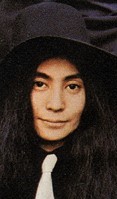 In reference to John's recent automobile accident he and Yoko had earlier that month in Scotland, as well as Yoko's having a bed brought into the studio to facilitate her recovery, Geoff Emerick continues: “John was actually in a pretty good mood throughout the entire session. I could see that he was a bit looser, a little more recovered from his injuries, and a lot less worried about Yoko, who was no longer lying in the bed, though it remained, unmade, in a corner of the studio, a mute reminder of the weirdness we'd had to deal with over the past weeks.” In reference to John's recent automobile accident he and Yoko had earlier that month in Scotland, as well as Yoko's having a bed brought into the studio to facilitate her recovery, Geoff Emerick continues: “John was actually in a pretty good mood throughout the entire session. I could see that he was a bit looser, a little more recovered from his injuries, and a lot less worried about Yoko, who was no longer lying in the bed, though it remained, unmade, in a corner of the studio, a mute reminder of the weirdness we'd had to deal with over the past weeks.”
 Before the recording began, however, much had to be decided about how “Here Comes The Sun-King” would be arranged musically. In 1987, George explained how they approached the song: “At the time, 'Albatross' (by Fleetwood Mac) was out, with all the reverb on guitar. So we said, 'Let's be Fleetwood Mac doing “Albatross,” just to get going.' It never really sounded like Fleetwood Mac, but that was the point of origin.” Before the recording began, however, much had to be decided about how “Here Comes The Sun-King” would be arranged musically. In 1987, George explained how they approached the song: “At the time, 'Albatross' (by Fleetwood Mac) was out, with all the reverb on guitar. So we said, 'Let's be Fleetwood Mac doing “Albatross,” just to get going.' It never really sounded like Fleetwood Mac, but that was the point of origin.”
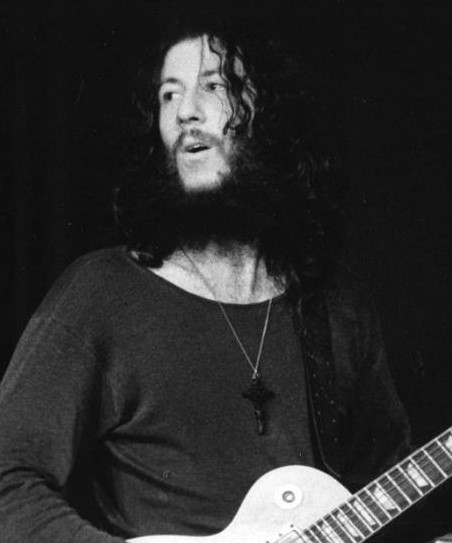 “Albatross” was a huge instrumental hit by a new British band called Fleetwood Mac, this single being released in November of 1968 and making its way up to #1 in Britain in 1969. Written by their guitarist Peter Green, it was then re-released in 1973 in Britain and made it all the way up to #2 in that year, selling a total of over 900,000 copies in the UK. Having made such a huge impact in Britain, it was admired by The Beatles and called to mind when recording “Sun King,” George Harrison later taking an acetate of the song around to play to friends, impressing on them how much they sounded like Fleetwood Mac. “Albatross” was a huge instrumental hit by a new British band called Fleetwood Mac, this single being released in November of 1968 and making its way up to #1 in Britain in 1969. Written by their guitarist Peter Green, it was then re-released in 1973 in Britain and made it all the way up to #2 in that year, selling a total of over 900,000 copies in the UK. Having made such a huge impact in Britain, it was admired by The Beatles and called to mind when recording “Sun King,” George Harrison later taking an acetate of the song around to play to friends, impressing on them how much they sounded like Fleetwood Mac.
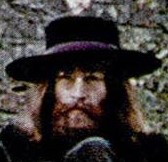 “That's where we pretend to be Fleetwood Mac for a few minutes,” John related to a DJ in 1969 shortly after the album's release. “We did the introductions, we call it the 'Sun riff,' the little instrumental bit that's like Fleetwood Mac, before we start singing, and we did it again at the end, so we are able to sing it to make them different, you know, so it wasn't just the same riff.” “That's where we pretend to be Fleetwood Mac for a few minutes,” John related to a DJ in 1969 shortly after the album's release. “We did the introductions, we call it the 'Sun riff,' the little instrumental bit that's like Fleetwood Mac, before we start singing, and we did it again at the end, so we are able to sing it to make them different, you know, so it wasn't just the same riff.”
 The singing that John mentioned here refers to the Spanish-like lyrics that were also concocted on this day. Geoff Emerick relates: “The vibe was so good that, this time around, Paul was invited by John to participate in both songs, which seemed to lift his spirits greatly. They even disappeared behind the screens at one point for a puff on a joint, just the two of them, and when they came out they had a fit of giggles as they sang the pseudo-Spanish gibberish at the end of “Here Comes The Sun-King”; in fact, they found it impossible to get through a take without dissolving into laughter.” The singing that John mentioned here refers to the Spanish-like lyrics that were also concocted on this day. Geoff Emerick relates: “The vibe was so good that, this time around, Paul was invited by John to participate in both songs, which seemed to lift his spirits greatly. They even disappeared behind the screens at one point for a puff on a joint, just the two of them, and when they came out they had a fit of giggles as they sang the pseudo-Spanish gibberish at the end of “Here Comes The Sun-King”; in fact, they found it impossible to get through a take without dissolving into laughter.”
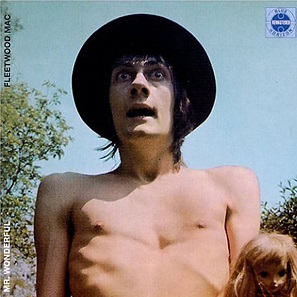 The Fleetwood Mac arrangement included George mimicking the "Albatross" lead guitar riffs among other things. Geoff Emerick continues: “It really was a group effort, and all four Beatles played with energy and enthusiasm, each making his own unique contribution to the sound and arrangement. Even Ringo came up with a strong idea, draping his tom-toms with heavy tea towels and playing them with timpani beaters in order to give John the 'jungle drum' sound he was after.” Not so coincidentally, this is exactly how Mick Fleetwood from Fleetwood Mac played “Albatross,” Ringo having to quickly switch to regular drumsticks when the “Mean Mr. Mustand” segment of the recording came up. The Fleetwood Mac arrangement included George mimicking the "Albatross" lead guitar riffs among other things. Geoff Emerick continues: “It really was a group effort, and all four Beatles played with energy and enthusiasm, each making his own unique contribution to the sound and arrangement. Even Ringo came up with a strong idea, draping his tom-toms with heavy tea towels and playing them with timpani beaters in order to give John the 'jungle drum' sound he was after.” Not so coincidentally, this is exactly how Mick Fleetwood from Fleetwood Mac played “Albatross,” Ringo having to quickly switch to regular drumsticks when the “Mean Mr. Mustand” segment of the recording came up.
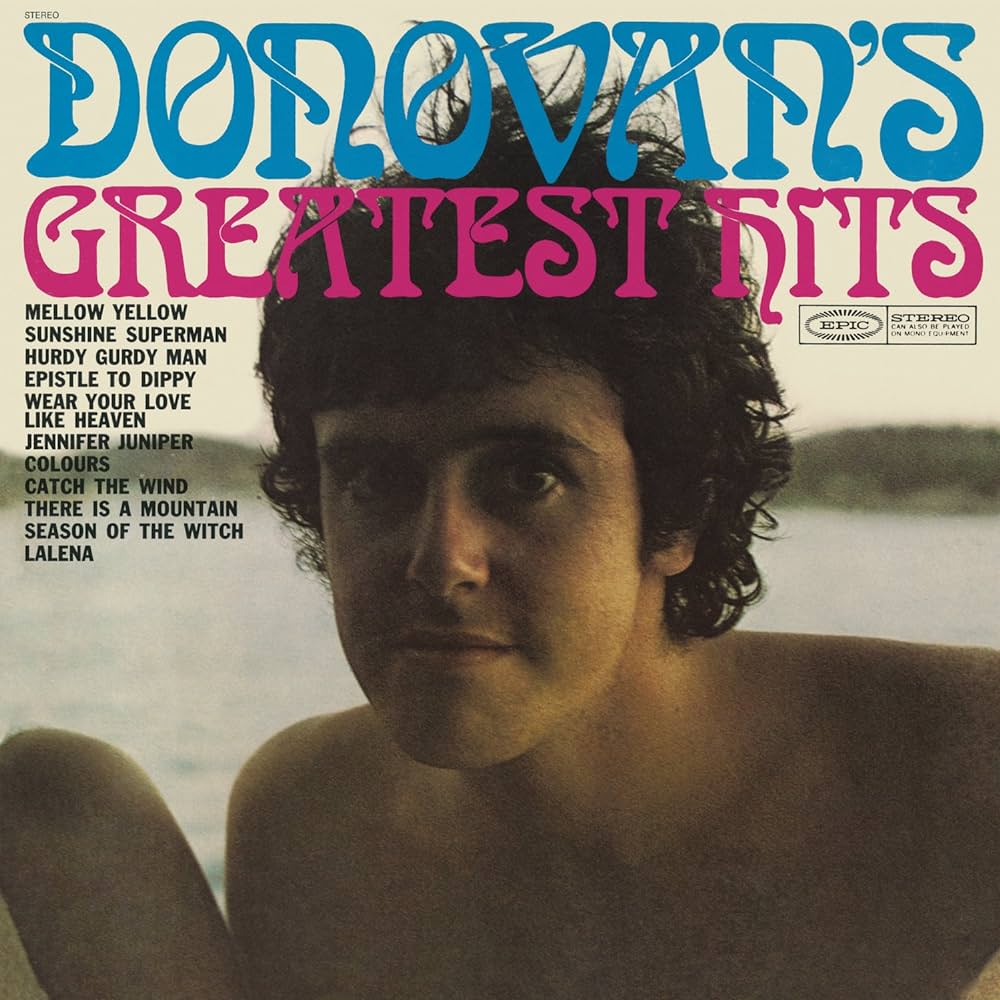 After all the writing, arranging and rehearsals were over, The Beatles recorded a total of 35 takes of the rhythm track for "Here Comes The Sun-King" on this day. The eight-track tape consisted of Paul on bass (track one), Ringo on drums (track two), John on rhythm guitar played through a rotating Leslie speaker (track three), George on lead guitar with a tremolo echo from his amplifier (track four) and John's guide vocal (track six). John sometimes used the Travis-picking style taught to him by Donovan in India in the spring of 1968. This composite track totaled 3:37 (2:30 for “Sun King” and 1:06 for “Mean Mr. Mustard”), the majority of the takes being complete performances. After all the writing, arranging and rehearsals were over, The Beatles recorded a total of 35 takes of the rhythm track for "Here Comes The Sun-King" on this day. The eight-track tape consisted of Paul on bass (track one), Ringo on drums (track two), John on rhythm guitar played through a rotating Leslie speaker (track three), George on lead guitar with a tremolo echo from his amplifier (track four) and John's guide vocal (track six). John sometimes used the Travis-picking style taught to him by Donovan in India in the spring of 1968. This composite track totaled 3:37 (2:30 for “Sun King” and 1:06 for “Mean Mr. Mustard”), the majority of the takes being complete performances.
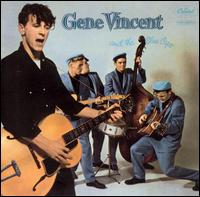 Author Mark Lewisohn, who was privileged to hear all of these takes in preparation for his book “The Beatles Recording Sessions,” relates the following: “This original tape displays the cohesion of The Beatles as a musical unit, with a thorough understanding between the four. All the basic ideas were there right from Ringo's delicately brushed cymbal which signaled the start. Even when the session suddenly slipped into a jam session – John singing a complete version of 'Ain't She Sweet' and then, clearly in Gene Vincent mood, following with 'Who Slapped John?' and 'Be-Bop-A-Lula' – the sound, though busked and impromptu, was also good and precise.” Author Mark Lewisohn, who was privileged to hear all of these takes in preparation for his book “The Beatles Recording Sessions,” relates the following: “This original tape displays the cohesion of The Beatles as a musical unit, with a thorough understanding between the four. All the basic ideas were there right from Ringo's delicately brushed cymbal which signaled the start. Even when the session suddenly slipped into a jam session – John singing a complete version of 'Ain't She Sweet' and then, clearly in Gene Vincent mood, following with 'Who Slapped John?' and 'Be-Bop-A-Lula' – the sound, though busked and impromptu, was also good and precise.”
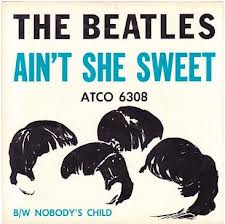 This version of “Ain't She Sweet” was good enough to be included on the 1996 compilation album “Anthology 3.” Lewisohn, who was commissioned to supply the liner notes on this release, further explained that this song was a “standard from 1927 that (Gene) Vincent had covered in 1956 and The Beatles themselves recorded in 1961 (in Hamburg, Germany). Then they had performed an arrangement that vocalist John Lennon described as 'a march,' but in this 1969 jam they duplicated the softened style of Vincent's recording (from his album 'Bluejean Bop!)." This "Ain't She Sweet" recording actually comprised 'take seven' of the proceedings for this day, followed by John's quip, "I hope you liked that trip boys." While they were in the mood, as mentioned above, they also touched on two other songs from Vincent's "Bluejean Bop!" album, namely "Who Slapped John?" and "Up A Lazy River," and then his biggest hit "Be Bop A Lula" before they got back to business with the task at hand. Comraderie was indeed at an all-time high. This version of “Ain't She Sweet” was good enough to be included on the 1996 compilation album “Anthology 3.” Lewisohn, who was commissioned to supply the liner notes on this release, further explained that this song was a “standard from 1927 that (Gene) Vincent had covered in 1956 and The Beatles themselves recorded in 1961 (in Hamburg, Germany). Then they had performed an arrangement that vocalist John Lennon described as 'a march,' but in this 1969 jam they duplicated the softened style of Vincent's recording (from his album 'Bluejean Bop!)." This "Ain't She Sweet" recording actually comprised 'take seven' of the proceedings for this day, followed by John's quip, "I hope you liked that trip boys." While they were in the mood, as mentioned above, they also touched on two other songs from Vincent's "Bluejean Bop!" album, namely "Who Slapped John?" and "Up A Lazy River," and then his biggest hit "Be Bop A Lula" before they got back to business with the task at hand. Comraderie was indeed at an all-time high.
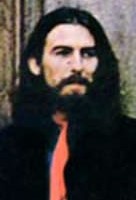 After "take ten,"' the group decided to go on a break for "coffee, tea and biscuits," as described by Kevin Howlett in the 50th Anniversary "Abbey Road" book. After the break, they got back to perfecting their performance, which inevitably displayed how much of a 'well oiled machine' The Beatles had become. "Take 20" was included among the bonus tracks on various editions of "Abbey Road" for its 50th Anniversary. Just before the take starts, as George continued practicing his highly echoed opening guitar passage, John joked, "Now this won't keep the Apple staff in work for the next ten years, lads! We have all those families to look after, you know. A lot of people to keep." After "take ten,"' the group decided to go on a break for "coffee, tea and biscuits," as described by Kevin Howlett in the 50th Anniversary "Abbey Road" book. After the break, they got back to perfecting their performance, which inevitably displayed how much of a 'well oiled machine' The Beatles had become. "Take 20" was included among the bonus tracks on various editions of "Abbey Road" for its 50th Anniversary. Just before the take starts, as George continued practicing his highly echoed opening guitar passage, John joked, "Now this won't keep the Apple staff in work for the next ten years, lads! We have all those families to look after, you know. A lot of people to keep."
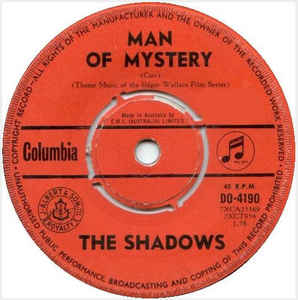 John then tries to reel in his bandmates for the next take by saying "OK, Fab, Gear!" while ongoing commotion continues for a few moments. John humorously reports to his producer in the control room, "George is getting silly, George, sir, George is getting silly." The opening guitar riff reminds them of the 1960 British instrumental hit "Man Of Mystery" by The Shadows, which George was trying to remember. "Can't find it," George exclaims, which prompts laughter and then a vocal demonstration from John of how the guitar riff went. After George then attempts to copy it, John counts "one, two, three, four" to begin the serious attempt at the next take of "Here Comes The Sun-King." While this rendition has a slightly faster tempo than what ended up being the final take, this take was nearly perfect. John then tries to reel in his bandmates for the next take by saying "OK, Fab, Gear!" while ongoing commotion continues for a few moments. John humorously reports to his producer in the control room, "George is getting silly, George, sir, George is getting silly." The opening guitar riff reminds them of the 1960 British instrumental hit "Man Of Mystery" by The Shadows, which George was trying to remember. "Can't find it," George exclaims, which prompts laughter and then a vocal demonstration from John of how the guitar riff went. After George then attempts to copy it, John counts "one, two, three, four" to begin the serious attempt at the next take of "Here Comes The Sun-King." While this rendition has a slightly faster tempo than what ended up being the final take, this take was nearly perfect.
At the end of this productive session, the band was satisfied with "take 35" of “Here Comes The Sun-King” and they called it for the night at 10:30 pm.
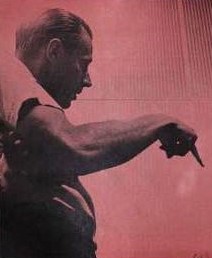 On the following day, July 25th, 1969, they arrived in EMI Studio Two at 2:30 pm for more work on “Here Comes The Sun-King.” The first thing on the agenda was to start adding the lush vocal harmonies onto the song, George Martin undoubtedly working these harmonies out with John, Paul and George. George Martin then performed an organ overdub for the song, attention then being given to adding overdubs to “Come Together” and then starting another segment of the long medley, this being “Polythene Pam / She Came In Through The Bathroom Window.” At 2:30 am the following morning, this twelve hour recording session finally came to a conclusion. On the following day, July 25th, 1969, they arrived in EMI Studio Two at 2:30 pm for more work on “Here Comes The Sun-King.” The first thing on the agenda was to start adding the lush vocal harmonies onto the song, George Martin undoubtedly working these harmonies out with John, Paul and George. George Martin then performed an organ overdub for the song, attention then being given to adding overdubs to “Come Together” and then starting another segment of the long medley, this being “Polythene Pam / She Came In Through The Bathroom Window.” At 2:30 am the following morning, this twelve hour recording session finally came to a conclusion.
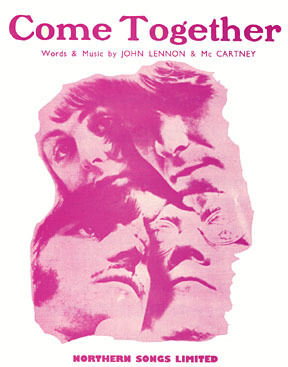 Then, on July 29th, 1969, The Beatles added the final overdubs onto what was now simply re-titled “Sun King” and “Mean Mr. Mustard.” They entered EMI Studio Three at 2:30 pm on this day and, after adding a guitar overdub onto “Come Together,” they added yet more vocal harmonies onto “Sun King.” After this was complete, George Martin re-recorded his organ overdub on the song's chorus, while Ringo added maracas to the final verse. With all eight tracks of the tape now filled, all that was left was to take the song to the mixing stage and then editing this segment into the long medley. The session ended at 10:45 pm. Then, on July 29th, 1969, The Beatles added the final overdubs onto what was now simply re-titled “Sun King” and “Mean Mr. Mustard.” They entered EMI Studio Three at 2:30 pm on this day and, after adding a guitar overdub onto “Come Together,” they added yet more vocal harmonies onto “Sun King.” After this was complete, George Martin re-recorded his organ overdub on the song's chorus, while Ringo added maracas to the final verse. With all eight tracks of the tape now filled, all that was left was to take the song to the mixing stage and then editing this segment into the long medley. The session ended at 10:45 pm.
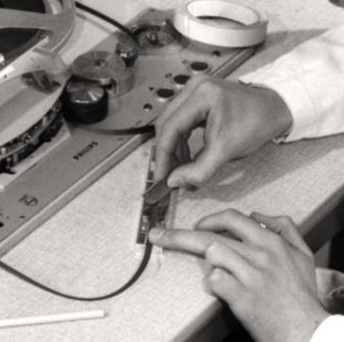 This editing work, however, proved to be more problematic than they thought. Three sessions were booked for the next day, July 30th, 1969, the third being dedicated to performing a test run of editing all the medley segments together into one long track. The group entered the control room of EMI Studio Two at 10:30 pm for this purpose. Rough stereo mixes of all of the medley segments needed to be made first, even though some of these segments weren't complete yet. Only one attempt at stereo mixing “Sun King / Mean Mr. Mustard” was needed at this stage, this mix being made by George Martin and engineers Geoff Emerick, Phil McDonald and John Kurlander. This editing work, however, proved to be more problematic than they thought. Three sessions were booked for the next day, July 30th, 1969, the third being dedicated to performing a test run of editing all the medley segments together into one long track. The group entered the control room of EMI Studio Two at 10:30 pm for this purpose. Rough stereo mixes of all of the medley segments needed to be made first, even though some of these segments weren't complete yet. Only one attempt at stereo mixing “Sun King / Mean Mr. Mustard” was needed at this stage, this mix being made by George Martin and engineers Geoff Emerick, Phil McDonald and John Kurlander.
 The main concern about “Sun King” was how a crossfade would be made from the song that appears before it, this being "You Never Give Me Your Money." “This was tried several times during the session,” Mark Lewisohn explains, “the best idea, so far, being to merge the songs on an organ note.” Geoff Emerick relates: “John didn't like the idea of there being such a long gap between the two songs, but Paul felt strongly that the mood needed to be set for the listener before 'Sun King' started. In the end, Paul got his way – John merely shrugged his shoulders and feigned disinterest.” In any event, this preliminary edit job gave them a good idea of how things would sound and the session ended at 2:30 am the following morning. The main concern about “Sun King” was how a crossfade would be made from the song that appears before it, this being "You Never Give Me Your Money." “This was tried several times during the session,” Mark Lewisohn explains, “the best idea, so far, being to merge the songs on an organ note.” Geoff Emerick relates: “John didn't like the idea of there being such a long gap between the two songs, but Paul felt strongly that the mood needed to be set for the listener before 'Sun King' started. In the end, Paul got his way – John merely shrugged his shoulders and feigned disinterest.” In any event, this preliminary edit job gave them a good idea of how things would sound and the session ended at 2:30 am the following morning.
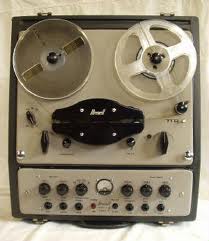 In the next few days, Paul came up with a better idea for creating a segue between “You Never Give Me Your Money” and “Sun King.” “Paul arrived with a plastic bag of tape loops,” Geoff Emerick recalls about their August 5th, 1969 session, “and we used several of them – including recordings of crickets and bells – instead.” Paul had recorded various sound effects at home on his Brennell tape machine and brought a bag of a dozen or so loose tape loops in to the control room of EMI Studio Three on this day to be properly recorded onto a four-track tape. It took them from 2:30 to 6:30 pm to fill all four tracks of the tape, which was then shelved until the actual assembling of the medley took place. In the next few days, Paul came up with a better idea for creating a segue between “You Never Give Me Your Money” and “Sun King.” “Paul arrived with a plastic bag of tape loops,” Geoff Emerick recalls about their August 5th, 1969 session, “and we used several of them – including recordings of crickets and bells – instead.” Paul had recorded various sound effects at home on his Brennell tape machine and brought a bag of a dozen or so loose tape loops in to the control room of EMI Studio Three on this day to be properly recorded onto a four-track tape. It took them from 2:30 to 6:30 pm to fill all four tracks of the tape, which was then shelved until the actual assembling of the medley took place.
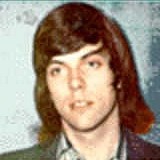 The day the assembling of the first portion of the medley took place was on August 14th, 1969 in the control room of EMI Studio Two, the session beginning at 2:30 pm. First off, however, “Sun King / Mean Mr. Mustard” needed a proper stereo mix, five attempts being made at the beginning of this session (remixes 20 – 24) by George Martin and engineers Geoff Emerick, Phil McDonald and Alan Parsons, remix 22 being deemed the best. This engineering staff made good use of stereo panning on the instruments to create an interesting effect, this idea quite possibly coming from The Beatles themselves. The day the assembling of the first portion of the medley took place was on August 14th, 1969 in the control room of EMI Studio Two, the session beginning at 2:30 pm. First off, however, “Sun King / Mean Mr. Mustard” needed a proper stereo mix, five attempts being made at the beginning of this session (remixes 20 – 24) by George Martin and engineers Geoff Emerick, Phil McDonald and Alan Parsons, remix 22 being deemed the best. This engineering staff made good use of stereo panning on the instruments to create an interesting effect, this idea quite possibly coming from The Beatles themselves.
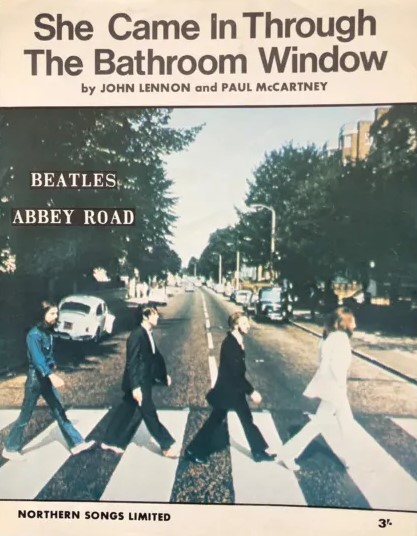 With this accomplished, and with other stereo mixes and recordings being done, it was time for editing the segments together. Eleven attempts were made at editing together “You Never Give Me Your Money” and “Sun King / Mean Mr. Mustard” utilizing Paul's sound effects tape, the final attempt undoubtedly being deemed the best at this point. The first half of the medley appeared to be finalized on this day, taking the song from “You Never Give Me Your Money” through to “She Came In Through The Bathroom Window.” By 2:30 am the next morning, this session came to a close. With this accomplished, and with other stereo mixes and recordings being done, it was time for editing the segments together. Eleven attempts were made at editing together “You Never Give Me Your Money” and “Sun King / Mean Mr. Mustard” utilizing Paul's sound effects tape, the final attempt undoubtedly being deemed the best at this point. The first half of the medley appeared to be finalized on this day, taking the song from “You Never Give Me Your Money” through to “She Came In Through The Bathroom Window.” By 2:30 am the next morning, this session came to a close.
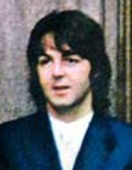 Thinking the album was complete on August 20th, 1969, the finished master of the entire album was created on this day in the control room of EMI Studio Two. However, someone (undoubtedly Paul) thought to have one final go at segueing “You Never Give Me Your Money” with “Sun King / Mean Mr. Mustard” using the sound effects tape. This was done on the following day, August 21st, 1969, also done in the control room of EMI Studio Two, by the same engineering team, this session beginning at 2:30 pm. Everyone was finally happy with this edit, which now had to be inserted into the already finished master tape of the “Abbey Road” album. The session ended at midnight after a new stereo mix of the song “The End” was also made. Thinking the album was complete on August 20th, 1969, the finished master of the entire album was created on this day in the control room of EMI Studio Two. However, someone (undoubtedly Paul) thought to have one final go at segueing “You Never Give Me Your Money” with “Sun King / Mean Mr. Mustard” using the sound effects tape. This was done on the following day, August 21st, 1969, also done in the control room of EMI Studio Two, by the same engineering team, this session beginning at 2:30 pm. Everyone was finally happy with this edit, which now had to be inserted into the already finished master tape of the “Abbey Road” album. The session ended at midnight after a new stereo mix of the song “The End” was also made.
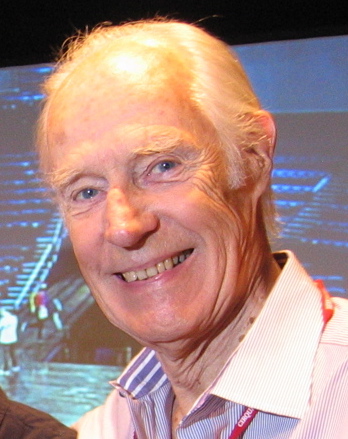 Sometime between 2004 and 2006, George Martin and his son Giles Martin returned to the master tapes of “Sun King” in putting together tracks for the Cirque du Soleil production of “Beatles Love” and its associated soundtrack album. The track “Gnik Nus” was put together by this production team which, as the title suggests, comprises the lush vocal arrangement of “Sun King” played backwards along with the tambora drone from "Within You Without You" heard in the background. Also, this album's newly created mix of “Octopus's Garden” features the opening segment of "Sun King" as the song's conclusion. Sometime between 2004 and 2006, George Martin and his son Giles Martin returned to the master tapes of “Sun King” in putting together tracks for the Cirque du Soleil production of “Beatles Love” and its associated soundtrack album. The track “Gnik Nus” was put together by this production team which, as the title suggests, comprises the lush vocal arrangement of “Sun King” played backwards along with the tambora drone from "Within You Without You" heard in the background. Also, this album's newly created mix of “Octopus's Garden” features the opening segment of "Sun King" as the song's conclusion.
 Giles Martin and engineer Sam Okell returned to the master tape of "Sun King" sometime in 2019 to create a new stereo mix for inclusion on the 50th Anniversary editions of "Abbey Road." While they were at it, they created a mix of "take 20" as recorded on July 24th, 1969, as well as the trial edit and mix of the entire "Abbey Road" medley from July 30th, 1969, both of these mixes being included in various 50th Anniversary releases. Giles Martin and engineer Sam Okell returned to the master tape of "Sun King" sometime in 2019 to create a new stereo mix for inclusion on the 50th Anniversary editions of "Abbey Road." While they were at it, they created a mix of "take 20" as recorded on July 24th, 1969, as well as the trial edit and mix of the entire "Abbey Road" medley from July 30th, 1969, both of these mixes being included in various 50th Anniversary releases.
Song Structure and Style
The simple structure of “Sun King” parses out to 'verse (instrumental)/ chorus/ verse' (or aba) with a moody instrumental introduction thrown in.
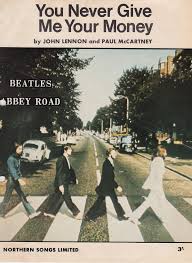 The opening moments of the song, which are actually a transition from the track “You Never Give Me Your Money” that proceeds it, comprise the sound-effects tape compiled by Paul, which sounds like bells and crickets. Along with this, we hear Ringo's effective cymbal roll, done with timpani beaters, that slowly builds in volume until George actually signals the song's introduction on lead guitar. The opening moments of the song, which are actually a transition from the track “You Never Give Me Your Money” that proceeds it, comprise the sound-effects tape compiled by Paul, which sounds like bells and crickets. Along with this, we hear Ringo's effective cymbal roll, done with timpani beaters, that slowly builds in volume until George actually signals the song's introduction on lead guitar.
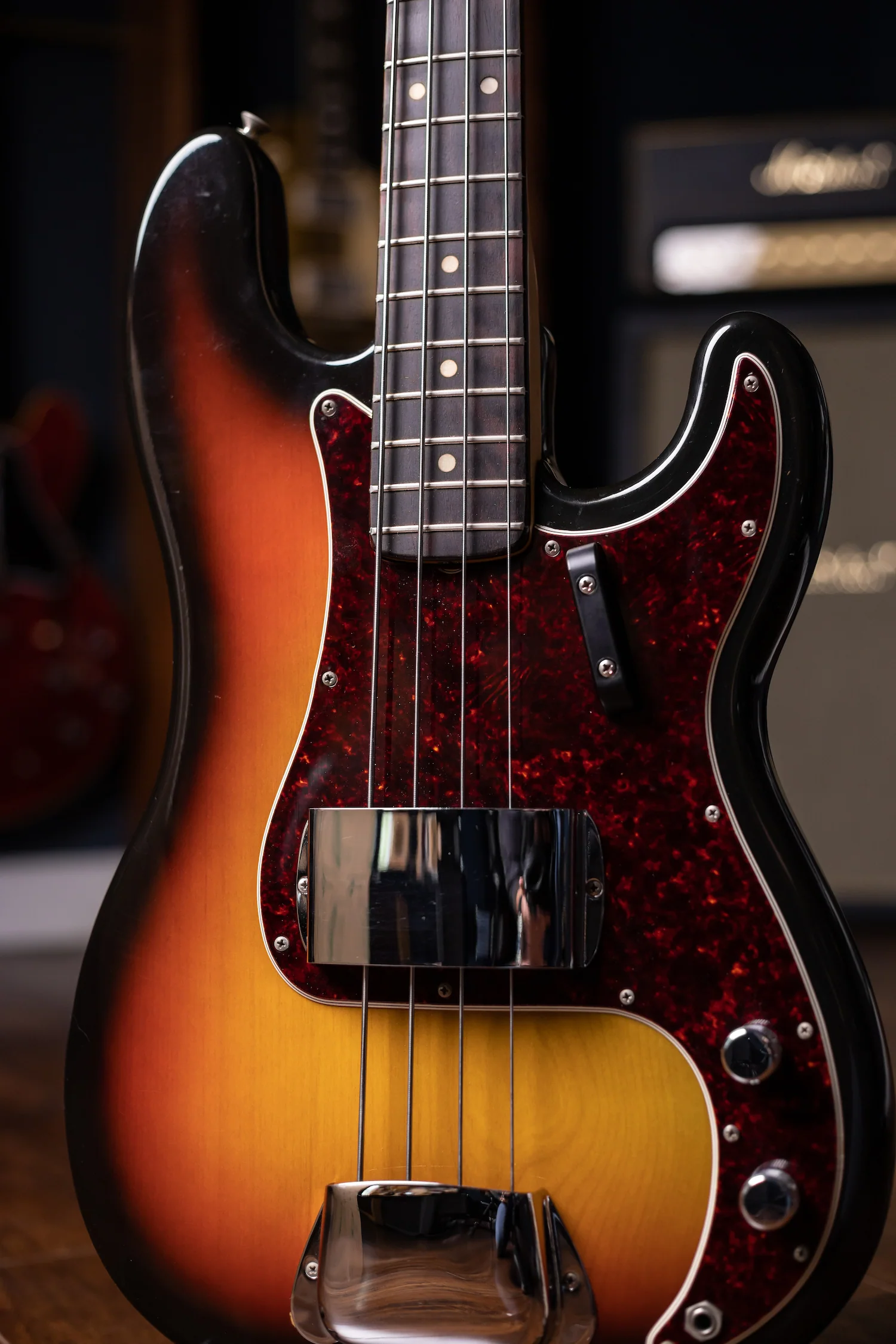 This instrumental introduction is only four measures long and features only three Beatles: George on lead guitar, Paul on bass and Ringo on drums, with the backdrop of the sound effects continuing throughout. George plays three four-note passages on guitar that are nearly a direct lift from Fleetwood Mac's “Albatross,” leaving large openings that are filled by Paul's subtle bass notes on his Fender Jazz Bass which alternate between higher and lower octaves of the same note. Ringo stays primarily on the heavily dampened toms as well as subtle beats on cymbals, the whole song being played with timpani beaters instead of sticks. This instrumental introduction is only four measures long and features only three Beatles: George on lead guitar, Paul on bass and Ringo on drums, with the backdrop of the sound effects continuing throughout. George plays three four-note passages on guitar that are nearly a direct lift from Fleetwood Mac's “Albatross,” leaving large openings that are filled by Paul's subtle bass notes on his Fender Jazz Bass which alternate between higher and lower octaves of the same note. Ringo stays primarily on the heavily dampened toms as well as subtle beats on cymbals, the whole song being played with timpani beaters instead of sticks.
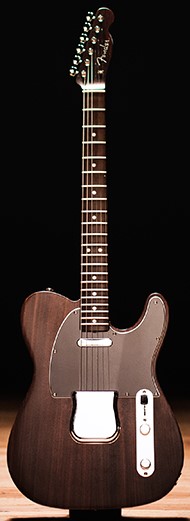 After George plays a four-note segue, quite likely on his newly aquired Fender Rosewood Telecaster, we move directly into the instrumental verse, which is a total of fourteen measures long, a three-times repeated alternation between two chords followed by a two measure segue. The instrumentation is the same as the introduction with the addition of John's tender Travis-picking guitar work through the first eight measures, gaps in his playing appearing in measures four and eight. Ringo continues his same drum pattern as in the introduction but adds his hi-hat beats, played with its foot pedal, on the two- and four-beats of the first twelve measures. George only plays his guitar riffs in the gaps left by John's guitar, which are in measures 3 and 4, 7 and 8, 11 and 12, and finally in measure fourteen as a higher pitched segue into the chorus that follows it. To add some variance to the arrangement, John replaces his Travis-picking with slow strums in measures nine through twelve, ending on a high bar chord. Paul adds in some nice bass runs here and there, his sound-effects gradually diminishing and finally disappearing by the end of the twelfth measure. After George plays a four-note segue, quite likely on his newly aquired Fender Rosewood Telecaster, we move directly into the instrumental verse, which is a total of fourteen measures long, a three-times repeated alternation between two chords followed by a two measure segue. The instrumentation is the same as the introduction with the addition of John's tender Travis-picking guitar work through the first eight measures, gaps in his playing appearing in measures four and eight. Ringo continues his same drum pattern as in the introduction but adds his hi-hat beats, played with its foot pedal, on the two- and four-beats of the first twelve measures. George only plays his guitar riffs in the gaps left by John's guitar, which are in measures 3 and 4, 7 and 8, 11 and 12, and finally in measure fourteen as a higher pitched segue into the chorus that follows it. To add some variance to the arrangement, John replaces his Travis-picking with slow strums in measures nine through twelve, ending on a high bar chord. Paul adds in some nice bass runs here and there, his sound-effects gradually diminishing and finally disappearing by the end of the twelfth measure.
 The final two measures of this verse are taken up by a lush chord of harmonies by John, Paul and George, sung in a hushed tone and overdubbed for added thickness. All instrumentation falls away to highlight these harmonies, which dissipate in the second half of the final measure, the remainder of this measure taken up with George's above-mentioned guitar riff and a simple tom fill from Ringo. The final two measures of this verse are taken up by a lush chord of harmonies by John, Paul and George, sung in a hushed tone and overdubbed for added thickness. All instrumentation falls away to highlight these harmonies, which dissipate in the second half of the final measure, the remainder of this measure taken up with George's above-mentioned guitar riff and a simple tom fill from Ringo.
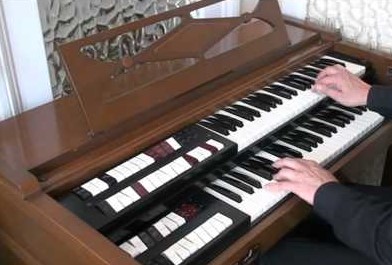 The one and only chorus of the song comes next, which is sixteen measures in length. The same instrumentation continues with the inclusion of lush harmonies from John, Paul and George singing “here come the sun king” three times, in measures 1 through 4, 5 through 8, and then 13 through 16. John sings the phrases “everybody's laughing / everybody's happy” in measures 9 through 12, which are double-tracked for extra thickness. Also present in the chorus is George Martin's twice overdubbed Lowery DSO organ, which mostly plays simple chords as a nice backdrop to the arrangement but adds some interesting runs in measures 7, 8, 10 and 12. Paul's overdubbed harmonies in measure 15 take on a higher tone than before and are sung in quarter-notes to add a nice change in the vocal arrangement. The one and only chorus of the song comes next, which is sixteen measures in length. The same instrumentation continues with the inclusion of lush harmonies from John, Paul and George singing “here come the sun king” three times, in measures 1 through 4, 5 through 8, and then 13 through 16. John sings the phrases “everybody's laughing / everybody's happy” in measures 9 through 12, which are double-tracked for extra thickness. Also present in the chorus is George Martin's twice overdubbed Lowery DSO organ, which mostly plays simple chords as a nice backdrop to the arrangement but adds some interesting runs in measures 7, 8, 10 and 12. Paul's overdubbed harmonies in measure 15 take on a higher tone than before and are sung in quarter-notes to add a nice change in the vocal arrangement.
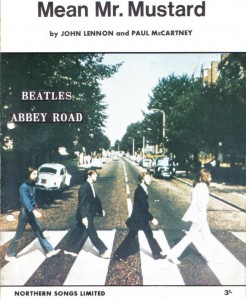 Next comes the second and final verse, which is twelve measures in length. The same instrumentation as the first verse is heard here, John continually playing his Travis-picking style this time around but also adding his high guitar strum once again in the twelfth measure. Other additions here include Ringo playing quiet maracas and, most noteworthy, John, Paul and George harmonizing the pseudo-Sparish lyrics throughout the entire verse. John's final high guitar strum signals the conclusion of the song, which actually signals Ringo to quickly switch to regular drumsticks for the opening fill that leads directly into “Mean Mr. Mustard.” Next comes the second and final verse, which is twelve measures in length. The same instrumentation as the first verse is heard here, John continually playing his Travis-picking style this time around but also adding his high guitar strum once again in the twelfth measure. Other additions here include Ringo playing quiet maracas and, most noteworthy, John, Paul and George harmonizing the pseudo-Sparish lyrics throughout the entire verse. John's final high guitar strum signals the conclusion of the song, which actually signals Ringo to quickly switch to regular drumsticks for the opening fill that leads directly into “Mean Mr. Mustard.”
American Releases
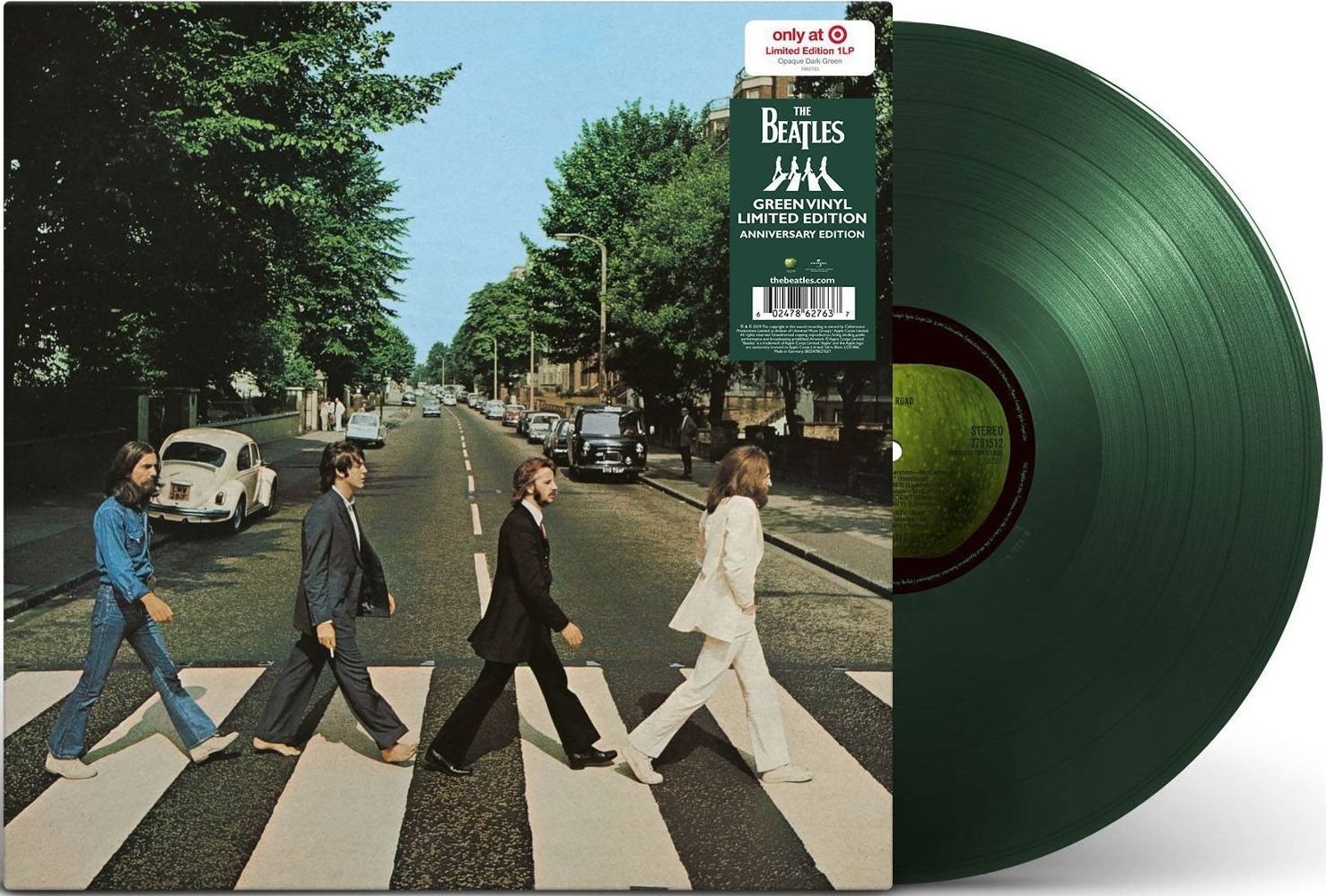 On October 1st, 1969, the final recorded Beatles album was released in America, simply titled "Abbey Road." "Sun King" is the fourth track on side two of the album and the second named track of the long medley that occupies the majority of the second side of the album. The "Abbey Road" album took only three weeks to jump into the top spot on the Billboard album chart, raking in a total of eleven weeks in the #1 position. The album first appeared on compact disc on October 10th, 1987, and then as a remastered release on September 9th, 2009. On September 27th, 2019, the album was re-released again with a new stereo mix on both vinyl and compact disc, not to mention an opaque green vinyl edition coming out on October 10th, 2025 as an exclusive release available only at Target Department Stores. On October 1st, 1969, the final recorded Beatles album was released in America, simply titled "Abbey Road." "Sun King" is the fourth track on side two of the album and the second named track of the long medley that occupies the majority of the second side of the album. The "Abbey Road" album took only three weeks to jump into the top spot on the Billboard album chart, raking in a total of eleven weeks in the #1 position. The album first appeared on compact disc on October 10th, 1987, and then as a remastered release on September 9th, 2009. On September 27th, 2019, the album was re-released again with a new stereo mix on both vinyl and compact disc, not to mention an opaque green vinyl edition coming out on October 10th, 2025 as an exclusive release available only at Target Department Stores.
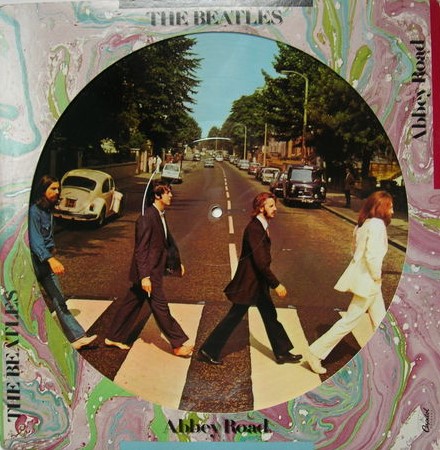 Sometime in 1978, Capitol re-released the “Abbey Road” album as a picture disc. Side one had the iconic front cover while side two contained a close-up of the wall photo of the back cover minus the song title listings. This release quickly went out of print but was re-released on September 27th, 2019 on 180-gram vinyl in celebration of the album's 50th Anniversary. Sometime in 1978, Capitol re-released the “Abbey Road” album as a picture disc. Side one had the iconic front cover while side two contained a close-up of the wall photo of the back cover minus the song title listings. This release quickly went out of print but was re-released on September 27th, 2019 on 180-gram vinyl in celebration of the album's 50th Anniversary.
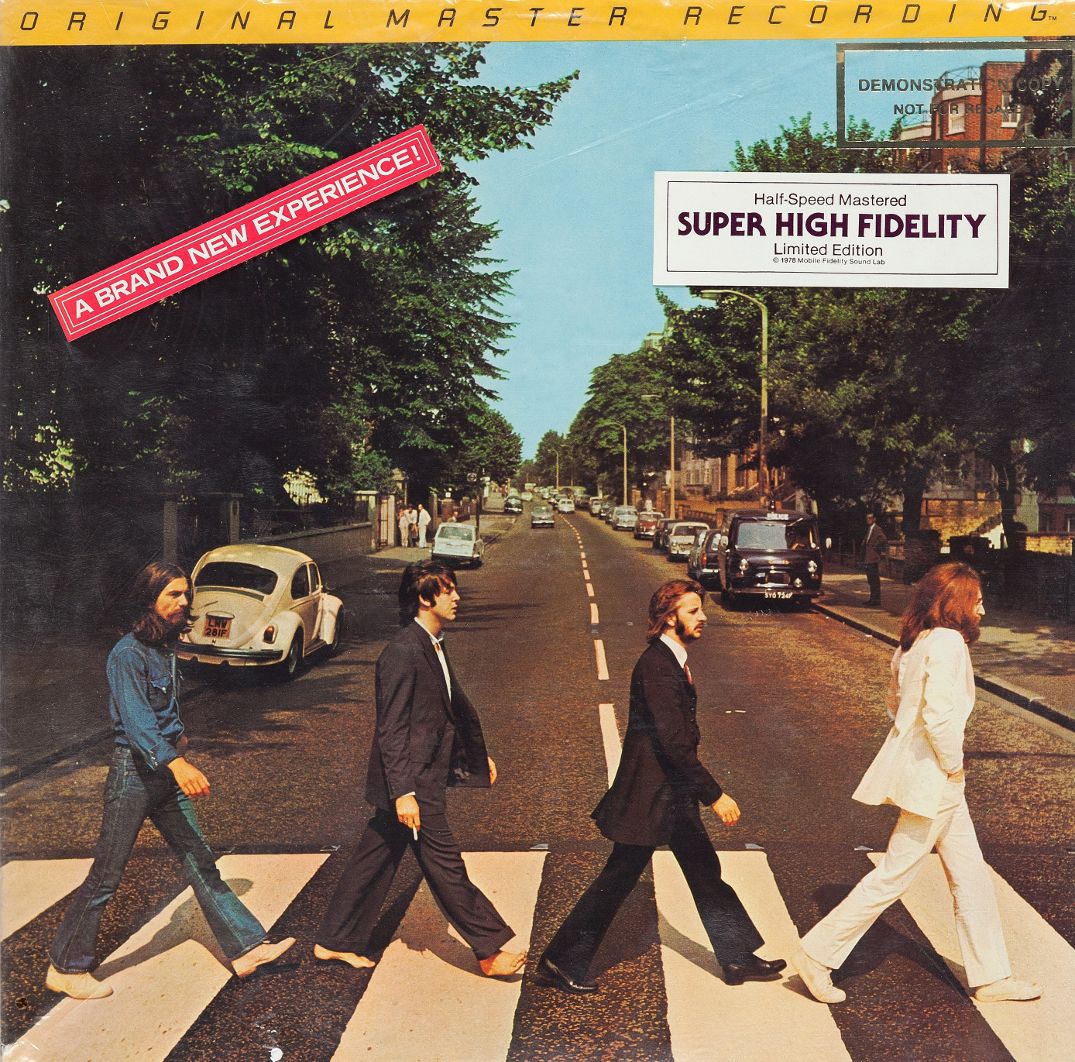 An interesting US vinyl edition of “Abbey Road” was released on December 28th, 1979, this being manufactured by Mobile Fidelity Sound Lab in Chatsworth, California as the first Beatles installment in their "Original Master Recording" series. Their practice was to prepare a new master utilizing half-speed mastering technology from the original master tapes, in this case using the leased sub-master from Capitol Records. Stickers on the shrinkwrap proclaimed this album as being “A Brand New Experience,” which proved to be the case. This version of the album sounded superior to all previous British and American pressings at that time. Unfortunately, this excellent edition of “Abbey Road” was only available for a short time and is quite collectible today. An interesting US vinyl edition of “Abbey Road” was released on December 28th, 1979, this being manufactured by Mobile Fidelity Sound Lab in Chatsworth, California as the first Beatles installment in their "Original Master Recording" series. Their practice was to prepare a new master utilizing half-speed mastering technology from the original master tapes, in this case using the leased sub-master from Capitol Records. Stickers on the shrinkwrap proclaimed this album as being “A Brand New Experience,” which proved to be the case. This version of the album sounded superior to all previous British and American pressings at that time. Unfortunately, this excellent edition of “Abbey Road” was only available for a short time and is quite collectible today.
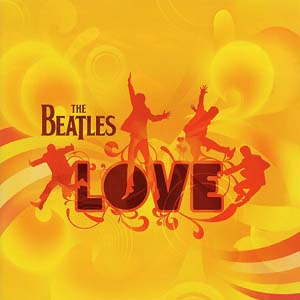 November 20th, 2006 was the release date for the above mentioned George and Giles Martin mix of the song on the album “Love,” which was put together exclusively for the Cirque du Soleil show of the same name. The track “Gnik Nus” features the vocal harmonies of “Sun King” played backward, and then the opening segment of the original song is featured as the conclusion of the newly created mix for “Octopus's Garden.” This successful album peaked at #4 on the Billboard album chart. November 20th, 2006 was the release date for the above mentioned George and Giles Martin mix of the song on the album “Love,” which was put together exclusively for the Cirque du Soleil show of the same name. The track “Gnik Nus” features the vocal harmonies of “Sun King” played backward, and then the opening segment of the original song is featured as the conclusion of the newly created mix for “Octopus's Garden.” This successful album peaked at #4 on the Billboard album chart.
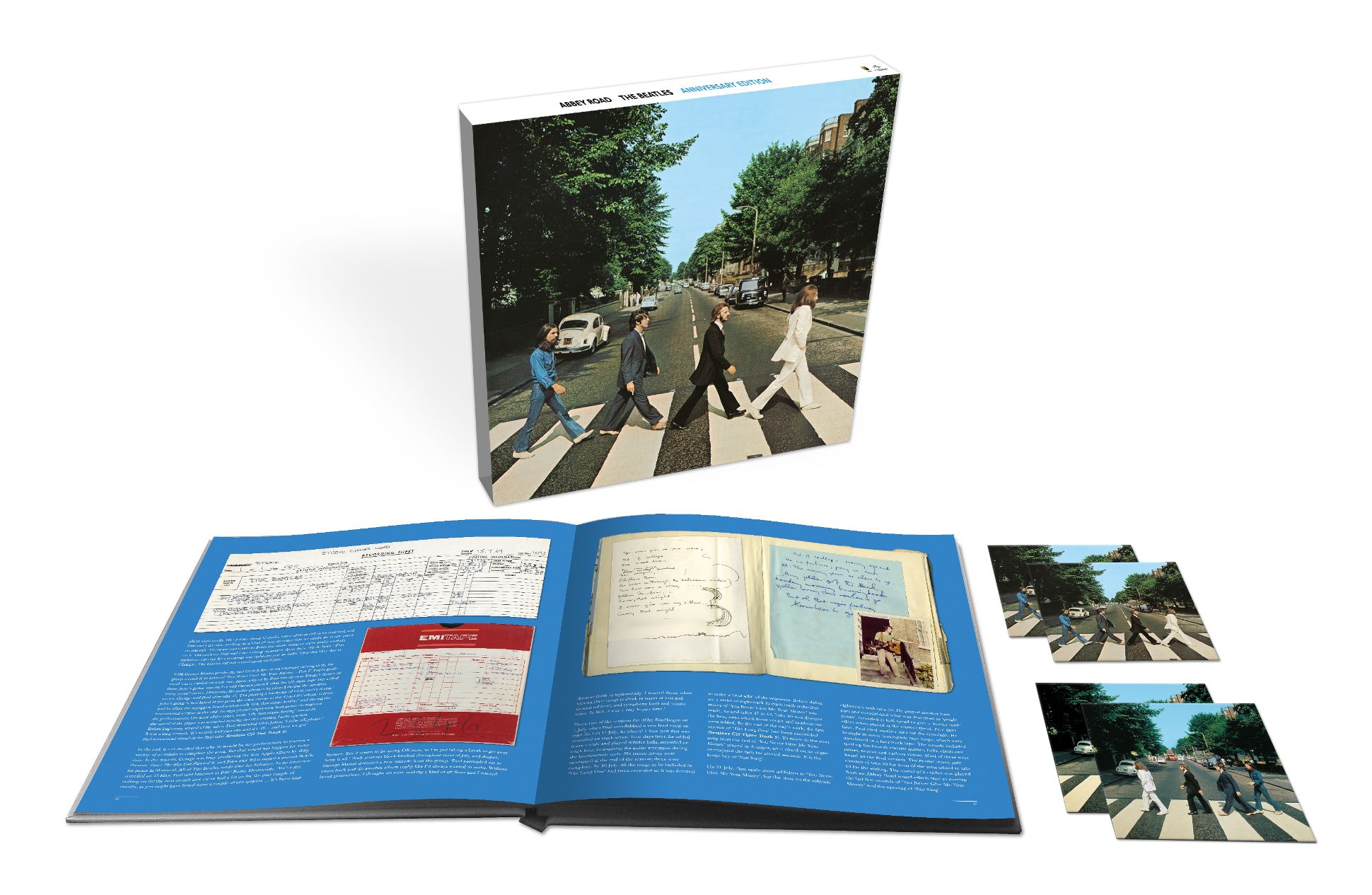 On September 27th, 2019, various other editions of "Abbey Road" were released in connection with its 50th Anniversary. The "Deluxe" 2CD set contains the newly created Giles Martin mix of the entire album as well as the never-before-heard 'take 20' of the "Sun King / Mean Mr. Mustard" medley as recorded on July 24th, 1969. The "Triple Album" vinyl set and the "Super Deluxe" 3CD + Blu-ray edition contain these tracks as well, along with the July 30th, 1969 trial edit and mix of the entire "Abbey Road" medley, as described above, which contains "Sun King" as it was mixed up to that point. On September 27th, 2019, various other editions of "Abbey Road" were released in connection with its 50th Anniversary. The "Deluxe" 2CD set contains the newly created Giles Martin mix of the entire album as well as the never-before-heard 'take 20' of the "Sun King / Mean Mr. Mustard" medley as recorded on July 24th, 1969. The "Triple Album" vinyl set and the "Super Deluxe" 3CD + Blu-ray edition contain these tracks as well, along with the July 30th, 1969 trial edit and mix of the entire "Abbey Road" medley, as described above, which contains "Sun King" as it was mixed up to that point.
Live Performances
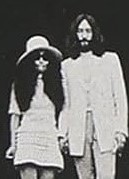 With John Lennon announcing to his other band members his desire to leave the group around the time of the release of “Abbey Road,” all possible chances of live performances by The Beatles ceased entirely at that time. Therefore, “Sun King” was never performed by the band on stage, nor did any individual member perform the song live as a solo performer. With John Lennon announcing to his other band members his desire to leave the group around the time of the release of “Abbey Road,” all possible chances of live performances by The Beatles ceased entirely at that time. Therefore, “Sun King” was never performed by the band on stage, nor did any individual member perform the song live as a solo performer.
Conclusion
 Taken on its own individual merit, "Sun King" is a prime example of what the cohesive unit of the four Beatles with George Martin all working together was capable of, even at this late stage in their career. They took John Lennon's simple unfinished rhythm guitar idea with minimal lyrics and all contributed ideas to develop it into an accomplished piece of work. Taken on its own individual merit, "Sun King" is a prime example of what the cohesive unit of the four Beatles with George Martin all working together was capable of, even at this late stage in their career. They took John Lennon's simple unfinished rhythm guitar idea with minimal lyrics and all contributed ideas to develop it into an accomplished piece of work.
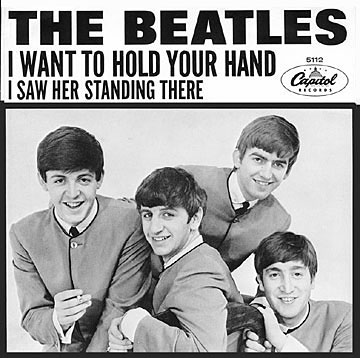 The results of this impressive track fit into the two-and-a-half minute time-frame that The Beatles had perfected throughout their career. And while they were used to creating pop standards that would fit into any radio playlist within this time constraint, such as “I Want To Hold Your Hand” and “She Loves You,” their musical maturity is now displayed in “Sun King” to, once again, reinvent themselves. Nowhere in their catalog do we hear another song that sounds anything like “Sun King,” this being accomplished by five men who were determined to change the modern musical landscape simply by being themselves. The results of this impressive track fit into the two-and-a-half minute time-frame that The Beatles had perfected throughout their career. And while they were used to creating pop standards that would fit into any radio playlist within this time constraint, such as “I Want To Hold Your Hand” and “She Loves You,” their musical maturity is now displayed in “Sun King” to, once again, reinvent themselves. Nowhere in their catalog do we hear another song that sounds anything like “Sun King,” this being accomplished by five men who were determined to change the modern musical landscape simply by being themselves.
Song Summary
“Sun King”
Written by: John Lennon / Paul McCartney
- Song Written: December 1968 to July 24, 1969
- Song Recorded: July 24, 25 & 29, August 5, 1969
- First US Release Date: October 1, 1969
- First US Album Release: Apple #SO-383 “Abbey Road”
- British Album Release: Apple #PCS 7088 “Abbey Road”
- US Single Release: n/a
- Highest Chart Position: n/a
- Length: 2:31
- Key: E major
- Producer: George Martin
- Engineers: Geoff Emerick, Phil McDonald, John Kurlander, Alan Parsons
Instrumentation (most likely):
- John Lennon - Lead and Harmony Vocals, Rhythm Guitar (1965 Epiphone ES- 230TD Casino)
- Paul McCartney - Bass (1966 Fender Jazz Bass), harmony vocals, tape loops
- George Harrison - Lead Guitar (1968 Fender Rosewood Telecaster), harmony vocals
- Ringo Starr - Drums (1968 Ludwig Hollywood Maple), maracas
- George Martin - Organ (1965 Lowery DSO Heritage Deluxe)
Written and compiled by Dave Rybaczewski
|
IF YOU WOULD LIKE TO MAKE A DONATION TO KEEP THIS WEBSITE UP AND RUNNING, PLEASE CLICK BELOW!
Sign Up Below for our MONTHLY BEATLES TRIVIA QUIZ!
|